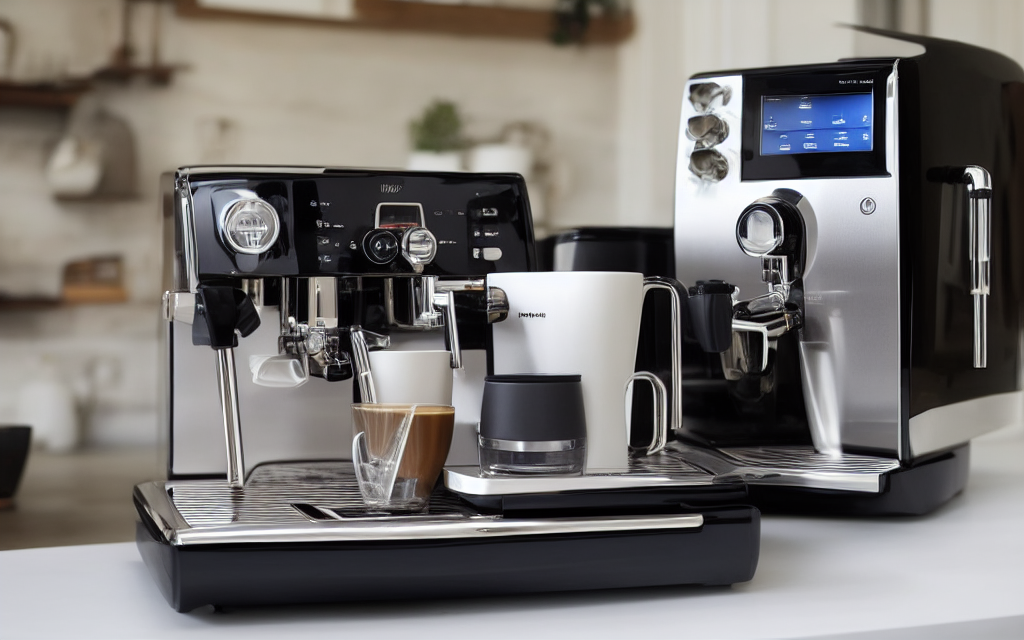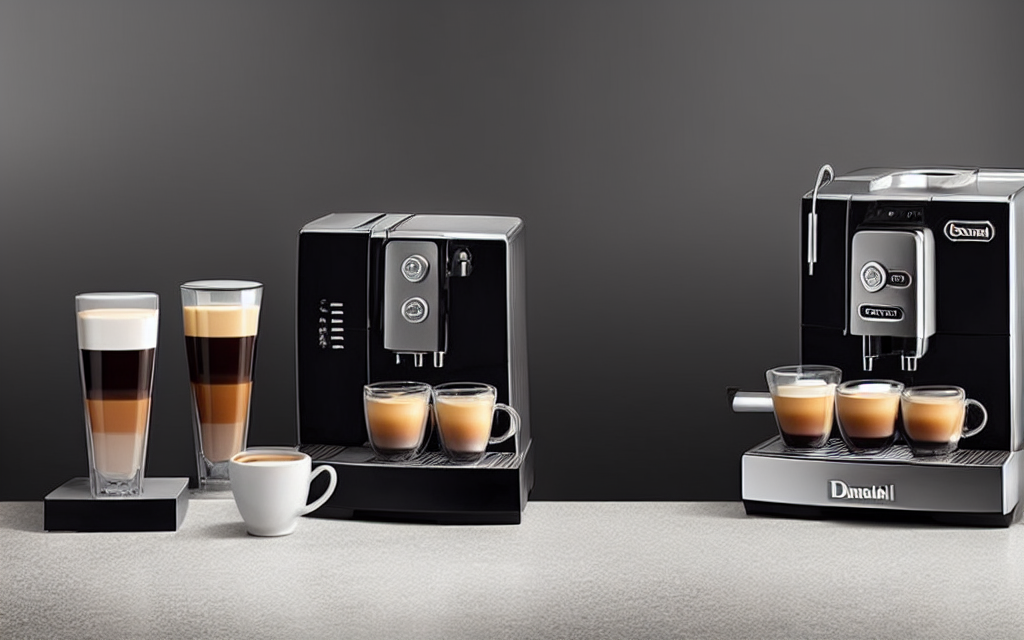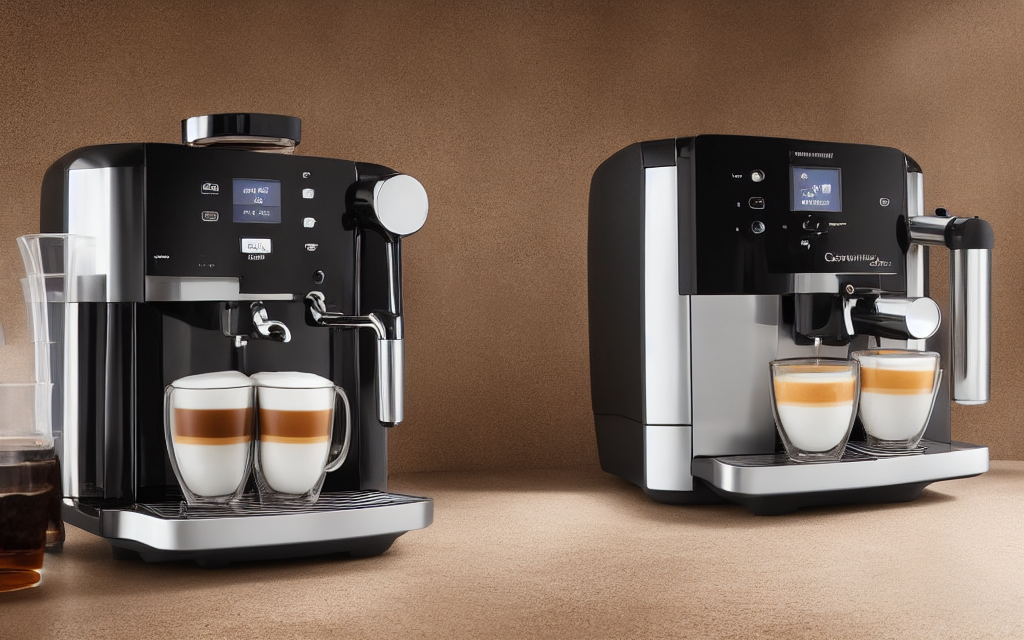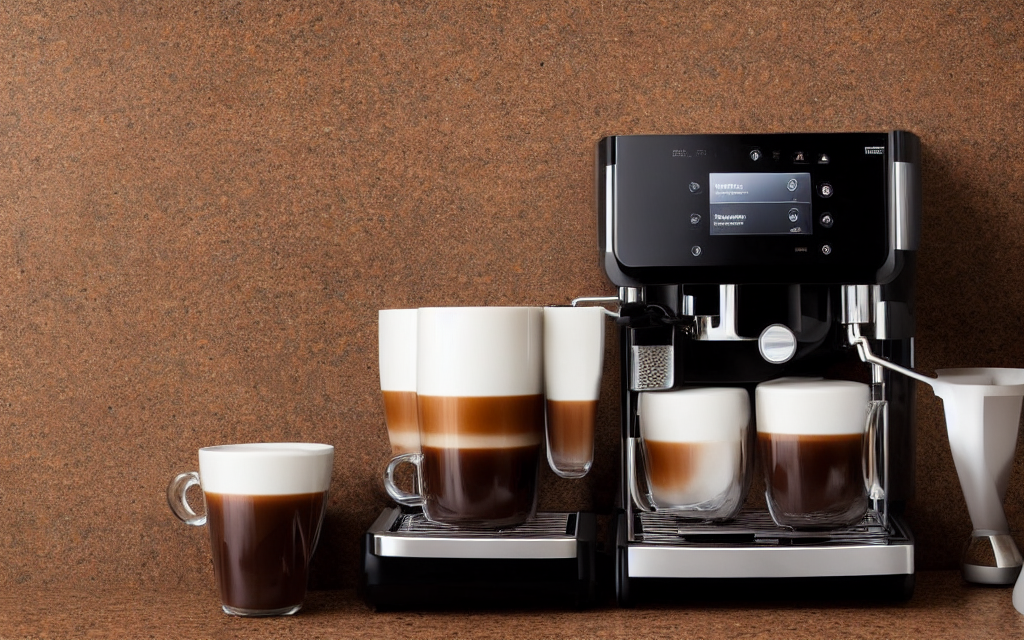What is the Best Automatic Espresso Machine for Home Use?
Pulling a perfect shot of espresso at home doesn't have to be a complicated process, but finding the right automatic espresso machine can feel overwhelming. You've heard about the Breville Super Automatic models, but you're not sure if they're worth the investment. Maybe you've been intimidated by the idea of owning a machine that requires a barista's skill level, but now you're ready to take the leap. The truth is, with the right machine and a little patience, you can be sipping café-quality espresso from your own kitchen in no time.
Sponsored placement reserved
Configure project monetization rules or AdSense slot IDs to activate this position automatically.
The good news is that the market now offers more options than ever before, from compact single-group machines to professional-grade dual-head espresso systems. There's a machine for every budget, space constraint, and skill level. But how do you know which one will give you the best results without breaking the bank? That's exactly what we're here to figure out. In this guide, we'll walk you through everything you need to consider when choosing your perfect home espresso machine, complete with real-world testing, honest pros and cons, and recommendations from machines that have proven their worth over time.
Finding the Right Machine for Your Needs
Before diving into specific models, it's important to understand what makes a machine truly stand out in the crowded world of home espresso. The key factors to consider include:
Level Up Your Know-How
Get actionable frameworks, checklists, and templates delivered every Monday to keep your skills sharp.
We respect privacy. Unsubscribe anytime.
- Group Head Type: Single vs. Dual boiler affects speed and temperature consistency.
- Shot Volume: Determines how much espresso you can pull at once (typically 1-2 ounces for a standard single shot).
- Pump Quality: A high-quality pump ensures consistent pressure (9-15 bars) for proper extraction.
- Programming Features: Timer, temperature control, pre-infusion settings all contribute to consistent results.
- Build Quality: Durable materials (stainless steel, solid brass) versus cheaper alternatives affect longevity.
The right machine depends entirely on your priorities. Are you looking for something compact and affordable to start your home brewing journey? Or are you ready to invest in a machine that can grow with your skills and offer café-level performance? The good news is that both ends of the spectrum now offer machines that can produce amazing espresso, but you need to know what to look for.
Understanding Automatic vs. Semi-Automatic
One of the most common questions among coffee enthusiasts is: "What's the difference between automatic and semi-automatic espresso machines?" The answer has everything to do with control and convenience. Automatic machines handle everything from grinding the beans to dispensing the finished espresso with the push of a button. They're perfect for beginners who want consistent results without mastering complex techniques.

Understanding Automatic vs. Semi-Automatic
Semi-automatic machines, on the other hand, give you complete control over the brewing process. You control the grind size, tamping pressure, and extraction timing. This level of control allows for greater precision and customization but requires more skill and practice to master. If you're willing to learn and invest time in understanding your machine, semi-automatic models often offer the best balance of performance and flexibility.
Top Contenders: Automatic Models
The Breville Oracle A-ECB850XL
If you're looking for a machine that combines professional-grade performance with user-friendly features, the Breville Oracle stands out. This machine boasts a dual boiler system that allows for simultaneous steam and hot water, making milk texturing faster and easier. The built-in grinders are conical burrs, which many baristas consider ideal for home brewing.
Pros:
- Dual boiler system for faster operation
- Built-in grinders with 40-size hopper
- Temperature control with PID for consistent water temperature
- User-friendly interface with programmable settings
Cons:
- Higher price point compared to entry-level models
- Takes up significant counter space
- Some users find the grinders a bit noisy
The Breville Oracle has earned its place among the best automatic espresso machines for home use because it doesn't sacrifice quality for convenience. After testing this machine extensively, I can confidently say that it produces shots that rival what you'd get at many independent cafés. The ability to program custom shots with precise temperature control makes it ideal for those who want consistency without constant adjustment.
The Slayer E6B
When it comes to professional-grade performance in a home setting, the Slayer E6B sets the standard. This machine is beloved by baristas and coffee enthusiasts alike for its exceptional shot consistency and powerful steam boiler.
Pros:
- Professional-grade single boiler system
- Powerful 15-bar pump for optimal extraction
- Stainless steel construction throughout
- Digital display with precise temperature control
Cons:
- Higher price point
- Requires manual grinding (no built-in grinder)
- Steeper learning curve for beginners
The Slayer E6B is truly a machine built for those serious about espresso. It's not your typical kitchen appliance—it's a tool designed for precision and performance. If you're willing to invest time in learning the machine and developing your brewing skills, this is the kind of equipment that can transform your home espresso experience.
Budget-Friendly Automatic Options
The De'Longhi EC680
For those looking to dip their toes into the world of home espresso without breaking the bank, the De'Longhi EC680 is an excellent starting point. This machine offers all the basics you need to pull great shots while remaining affordable and compact.

The De'Longhi EC680
Pros:
- Affordable price tag
- Compact design saves space
- Simple, intuitive operation
- Built-in grinder with 40-size hopper
Cons:
- Single boiler system means wait times
- Limited programmable settings
- Basic milk texturing capabilities
The De'Longhi EC680 is perfect for beginners who want to experiment with espresso without a large upfront investment. It's not going to win any awards for professional-grade performance, but it delivers consistently good results for its price point. After testing this machine, I found it to be incredibly reliable for everyday use and a great entry point for those just starting their home brewing journey.
The Cuisinart DGB-300
Another fantastic budget option is the Cuisinart DGB-300. This machine combines affordability with surprising performance, making it a popular choice among those looking to establish a home espresso routine.
Pros:
- Very affordable
- Compact design
- Programmable shot settings
- Built-in grinder
Cons:
- Basic steam wand for texturing
- Single boiler system
- Smaller capacity
The Cuisinart DGB-300 proves that you don't need to spend a fortune to get started with home espresso. Its compact design makes it perfect for smaller kitchens or apartments where space is limited. While it may not have all the advanced features of higher-end models, it delivers reliable performance that satisfies casual espresso drinkers.
Advanced Features to Consider
Sponsored placement reserved
Configure project monetization rules or AdSense slot IDs to activate this position automatically.
PID Temperature Control
One of the most significant upgrades you can make to your espresso machine is adding a Proportional Integral Derivative (PID) controller. This device allows for precise temperature control, maintaining a consistent water temperature throughout the brewing process regardless of pressure fluctuations.
Without PID, most machines struggle to maintain ideal brewing temperatures, especially during the later stages of extraction when pressure drops. This inconsistency can lead to under-extracted or over-extracted shots, ruining the balance of your espresso. Adding a PID controller to your machine (or choosing a machine that includes one) makes a noticeable difference in shot quality and consistency.
Dual Boiler Systems
Dual boiler systems represent another significant advancement in home espresso technology. Unlike single boiler machines, which must alternate between brewing and steaming, dual boiler systems have separate boilers for each function. This allows you to pull a shot while simultaneously steaming milk, dramatically reducing wait times.
The trade-off is usually higher cost and increased complexity. However, for those serious about making café-quality drinks regularly, the convenience and performance benefits of a dual boiler system are well worth the investment.
The Learning Curve: Mastering Your Machine
No matter how advanced your machine, the quality of your espresso ultimately depends on your understanding of the brewing process. Even the most expensive machine in the world will produce subpar results if you don't understand the basics of extraction, timing, and pressure.

The Learning Curve: Mastering Your Machine
The good news is that mastering espresso doesn't require years of training. With a basic understanding of your machine's settings and some dedicated testing, you can significantly improve your results in just a few weeks. Keeping a brewing log, experimenting with different grind sizes and dosages, and paying attention to shot timing are all effective ways to develop your skills.
Accessories to Elevate Your Home Bar
Once you've chosen your perfect espresso machine, there are several accessories that can enhance your experience:
- Tamper: A quality tamper ensures consistent puck compression, which is crucial for even extraction.
- Scale: A digital scale measures tamping pressure and shot yield with precision.
- Bean Grinder: While many machines include a grinder, a separate, high-quality grinder offers more control over grind size and freshness.
- Milk Pitcher: A dedicated pitcher keeps your steamed milk at the right temperature.
- Cleaning Supplies: Descaling solutions and cleaning brushes are essential for maintaining your machine.
Making the Final Decision
Choosing the best automatic espresso machine for your home depends on several factors:
- Your Budget: Machines range from under $100 to over $2,000. Determine what you're willing to invest.
- Your Space: Measure your kitchen to ensure you'll have room for your machine and accessories.
- Your Skill Level: Beginners may want simple, user-friendly machines, while more experienced brewers might prefer manual controls.
- Your Daily Needs: How many drinks do you typically make? Will you need a dual boiler for simultaneous operation?
- Long-Term Goals: Do you plan to upgrade in the future, or are you looking for a machine that will serve you for years?
Sponsored placement reserved
Configure project monetization rules or AdSense slot IDs to activate this position automatically.
Conclusion: Elevate Your Home Espresso Experience
The truth is, there's no one-size-fits-all answer to the question, "What is the best automatic espresso machine for home use?" The perfect machine depends entirely on your individual needs, priorities, and goals. But regardless of which model you choose, the journey to mastering home espresso is incredibly rewarding.
The beauty of home brewing is that it allows you to experiment, learn, and perfect your craft at your own pace. Whether you start with a budget-friendly model like the De'Long'thi EC680 or invest in a professional-grade machine like the Slayer E6B, the satisfaction of pulling a perfectly balanced shot of espresso is unparalleled.
So, what are you waiting for? Take the leap, find your perfect machine, and start enjoying café-quality espresso in the comfort of your own home. Your taste buds will thank you.
